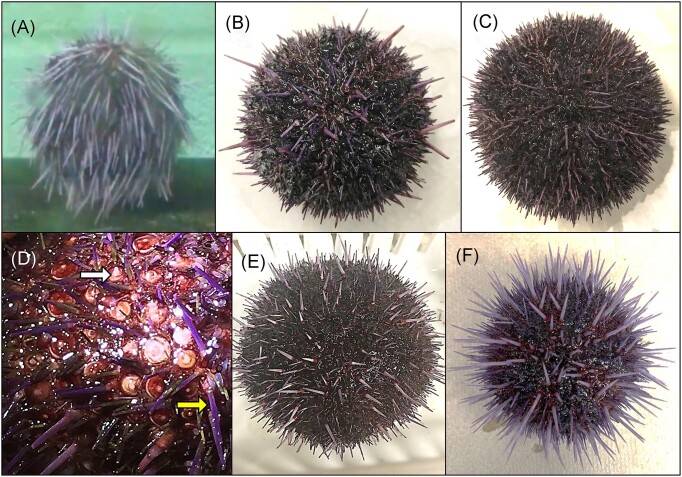Figure 1.
BSUD progression and recovery in the purple sea urchin. (A) An early symptom of BSUD is drooping spines suggesting that the sea urchin may be sleeping as has been observed on rare occasions for healthy sea urchins. Alternatively, the surface infection that would impact the muscles associated with the base of the spines and the tubercles may have altered spine movement (see Video 1; Supplementary Data File 2, Video 1 Legend). (B) A sea urchin infected with BSUD that has lost many of its primary spines. (C) A sea urchin with BSUD that has lost all of its primary spines and shows the red tubercles to which primary spines are normally attached. Shorter and smaller secondary spines remain attached. (D) A magnified image of the surface of a sea urchin with BSUD that has lost all primary spines. The secondary spines (yellow arrow), pedicellariae that are too small to see in this image, and tube feet remain on the animal surface. The beginnings of newly growing spines (white arrow) are present on some tubercles. (E) A recovering sea urchin with newly regrowing primary spines that are short, pointed, and light purple. (F) A healthy sea urchin after full recovery from BSUD with the characteristic of rigid primary spines oriented perpendicular to the animal body.

